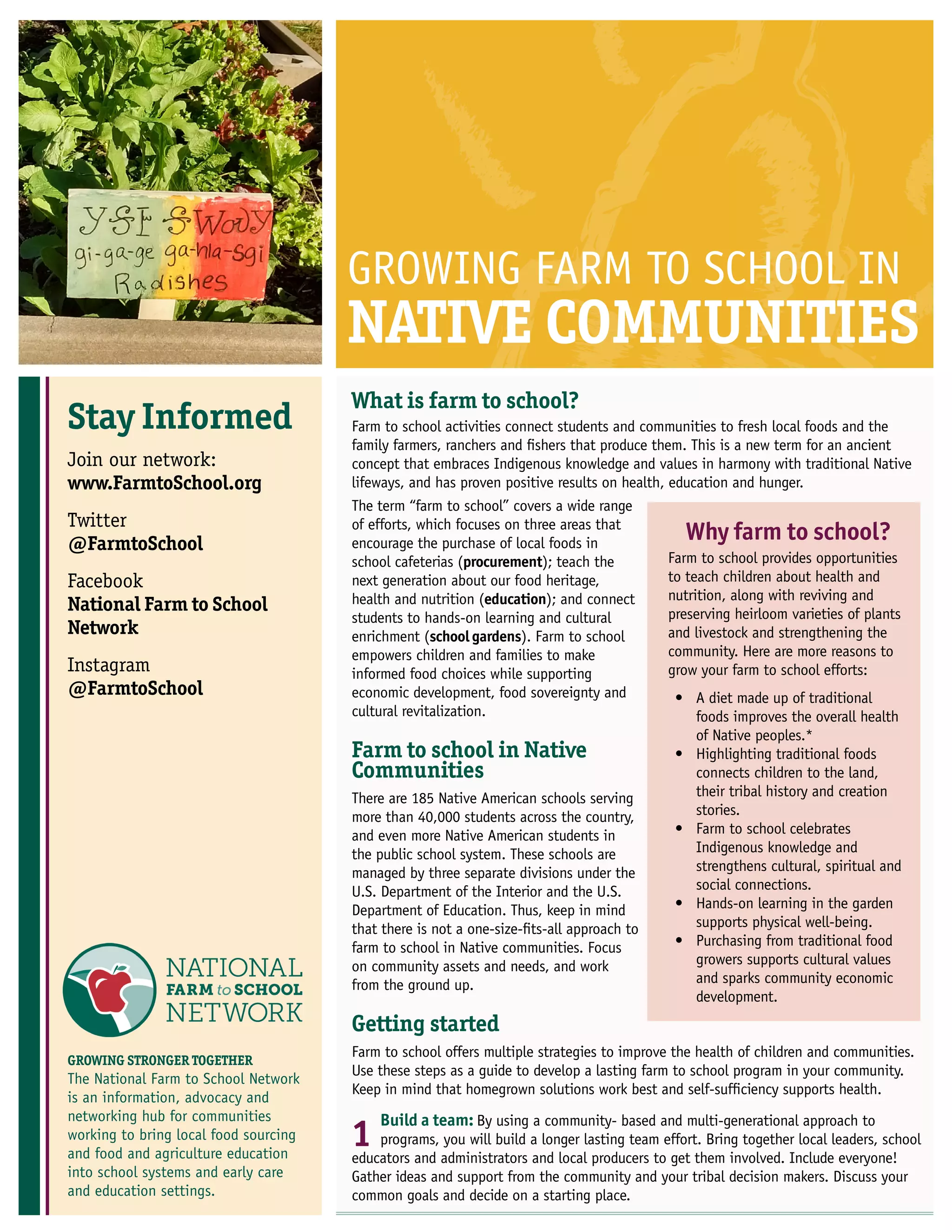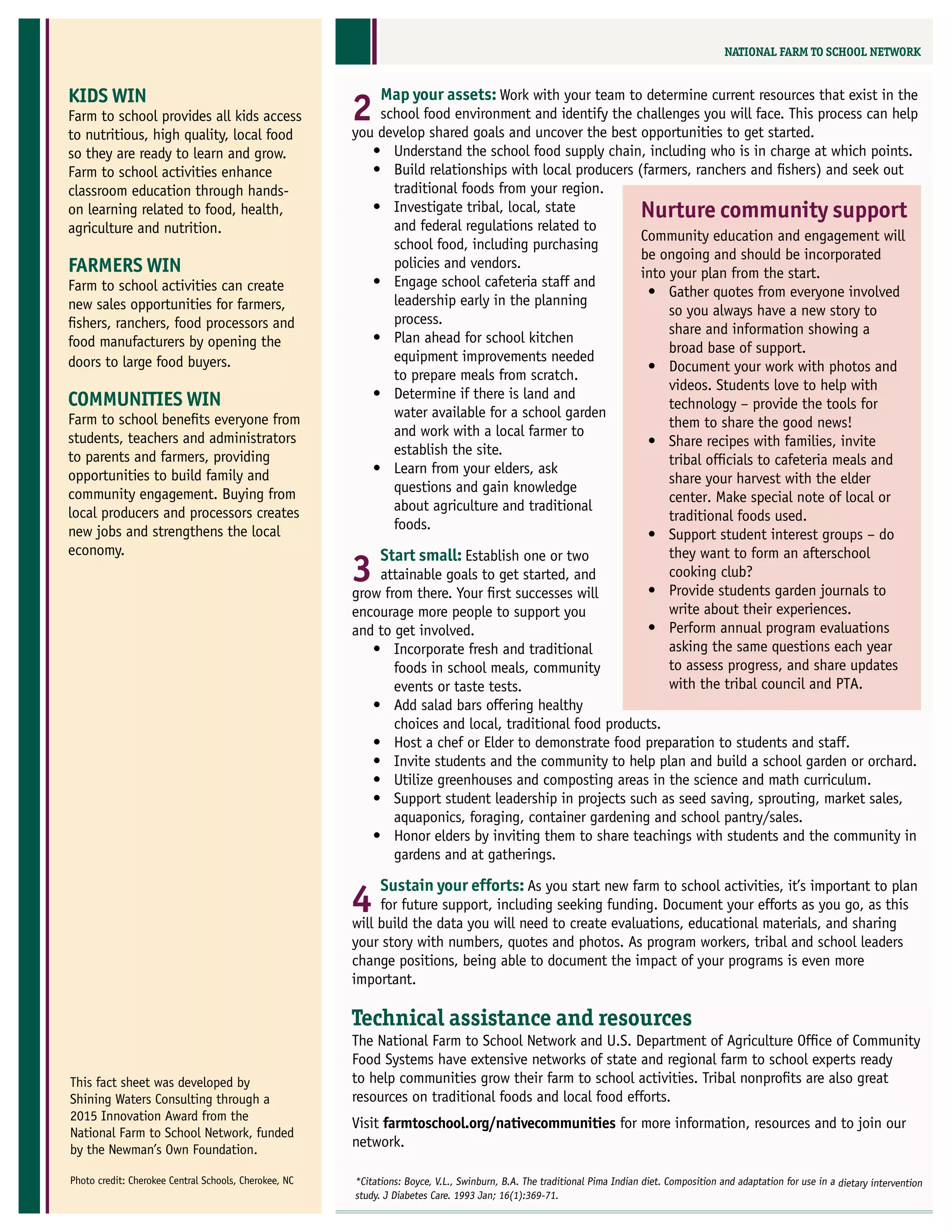This document provides guidance on developing farm to school programs in Native communities. It discusses how farm to school connects students to local foods, traditional foods, and family farmers while promoting health, education, and food sovereignty. The document recommends taking a community-based approach, starting small by incorporating local and traditional foods into school meals and events, and sustaining efforts by seeking funding and documenting impacts. The overall goal is to empower children and families through culturally relevant farm to school activities.

